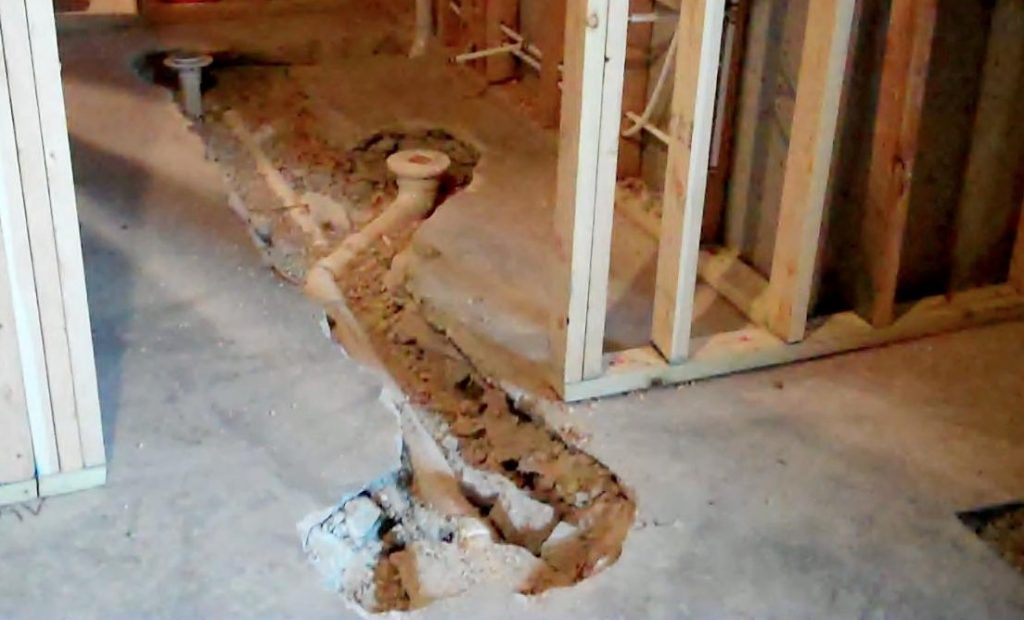
With the devaluation of homes in today’s real estate market, many homeowners are turning to remodeling their exiting home instead of selling and purchasing a new home. Bathroom, Kitchen, or Basement Remodeling projects can be minor or major tasks. Some plumbing remodeling jobs can be over in two days, while others can last for weeks. Bottom line, your best bet is to hire an experienced, licensed plumber like Roberts Plumbing, Inc. to do the project and here’s why!
What’s behind the walls and what’s in the ground? The plumbing contractor has to be part detective to determine what he is dealing with!! Here are some things that your plumbing contractor will consider for you:
Code Restrictions & Permits:
Your new addition or plumbing fixtures may impact your homes original septic system or Certificate of Occupancy issued by the Permitting Authority (City or County) when it was built. You must check with the Permitting Authority before you begin.
Layout of the new Plumbing Project:
The simplest and most cost-effective way to add a new fixture is to connect them to the existing main plumbing vent. A common strategy is to install them above, below, or back-to-back existing fixtures on the stack. If you are adding fixtures not near existing plumbing you’ll need to devise a strategy to tie into the existing waste system.
Existing Plumbing Pipes:
The age of the existing plumbing will greatly affect the cost of the upgrade work. Existing cast iron, galvanized, copper, or polybutylene pipe may need to be repaired or replaced. The deteriation of these pipes may not be obvious, since these pipes can rot or corrode from the inside. When you tie into existing plumbing the problems with the old pipes can escalate. Heating joints and twisting fittings can cause problems upstream or downstream of the addition.
Plumbing Fixtures:
If a tub unit is to be replaced, the major trouble will be access to the tub drain line and the supply lines. The old tub itself might pose a problem in removing it from the home. Old cast iron tubs are very heavy and some old tubs may not fit through the door openings. The same is true for new Jacuzzi or soaking tubs, will they fit in the existing space and will it clear all the obstacles bringing it into the home. The addition of a large capacity tub may require the addition of a separate hot water heater (i.e. tankless water heater) or the upgrade of the existing homes water heater.
Leaking shower valves and shower pans can cause tremendous damage to the existing structure, almost all of which may be hidden until the existing fixture is removed. This damage may require structural repairs before the new fixture is added.
Removing or replacing existing sinks and vanities is generally straightforward. Inspect the supply tubes, shutoffs, and fittings under the sink to insure they are in good repair and don’t need replacement. Make sure the new sink or vanity will fit into the existing cabinet or countertop.
Existing Walls and Floors:
Plumbing Vent sizing requirements may have changed since the home was built or the vents may have to be upgraded due to the addition of new plumbing fixtures or appliances. Also, code restrictions against cutting the top or bottom plate of the framing may make it difficult to add a new soil stack.
A limiting factor in any remodeling project on upper floors is the depth of the floor joist. Many older buildings have relative shallow floor joists that restrict getting new drain lines into the existing space. Current building codes…and common sense…may restrict your ability to cut, drill, or modify joists sufficiently to allow for easy installations. The weight of a new tub can also be a consideration if installed on a wood floor system. Make sure to verify the floor joist spacing and depth of the floor joists. Ceramic tile floors also add to the weight on a floor and must be considered.



